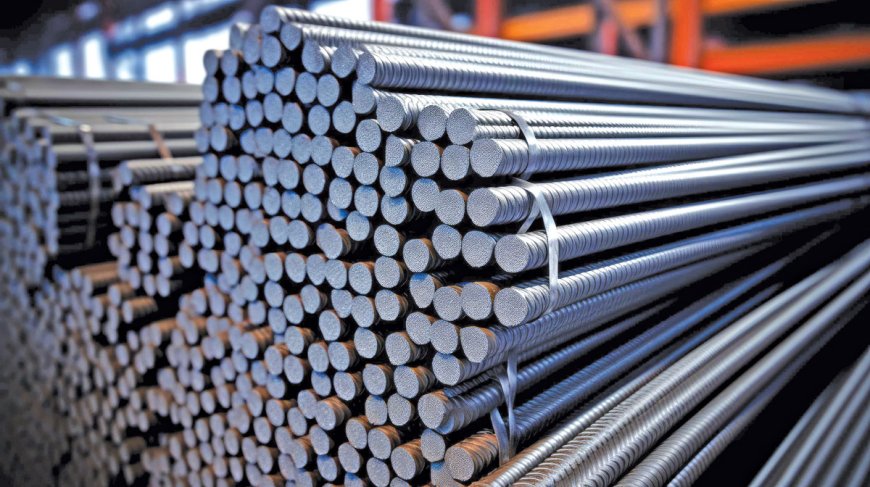Stainless steel: Enhancing infrastructure longevity and resilience

Use of steel is taking a lead role in construction with the infrastructure and real estate sectors looking at sustainable and lasting solutions. Construction Times explores the growing demand of stainless steel in today’s construction activities and its future growth opportunities.
Use of steel is growing significantly in construction and infrastructure projects. Stainless steel products are attractive and corrosion resistant, need little maintenance and offer good strength, toughness and fatigue properties. These properties are ideal for construction industry applications. With infrastructure and building constructions picking up, stainless steel has increased use in structural applications. The growing relevance of stainless steel in construction industry has driven the demand for advanced features and strength for the structure or product. In this Feature, Nikhil Mansukhani, Director, MAN Industries, and Anubhav Kathuria, Director, Synergy Steels, share their views on the current demand trend of stainless steel in construction and the growth opportunities.
Growing relevance in construction

Stainless steel's significance is growing steadily, alongside an increase in its production volume. Nikhil Mansukhani, Director, MAN Industries, elaborates, “Despite its high cost, the benefits of stainless steel are undeniable. The chromium alloy in stainless steel ensures its resistance to corrosion. It is commonly employed in non-defence, food, and construction sectors. Additionally, there are various types of stainless steel, and the preference is for the one that matches the desired characteristics for your project.”

As India aims to achieve a $30 trillion economy by 2047, substantial growth will be driven by increased government investments in construction and infrastructure. However, India’s construction sector is highly carbon-intensive, contributing around one-sixth of the nation's total greenhouse gas emissions. This underscores the rising importance of moving towards more sustainable and cleaner materials like stainless steel. Anubhav Kathuria, Director, Synergy Steels, highlights the advantages, “Stainless-steel’s 100% recyclability makes it an environmentally preferable option significantly reducing its carbon footprint compared to other alternative materials. It saves 29.9% compared to carbon steel and a remarkable 112.8% compared to aluminium. Owing to these attributes, it is a material of choice for sustainable development initiatives across various applications in construction, ensuring its relevance and adoption will only increase in the future.”
In the construction field, stainless steel is utilized in beams, columns, and reinforcing bars. Its high electrical conductivity-to-weight ratio and rust-resistant properties make it an excellent choice for creating the structural elements of both homes and commercial structures.
Additionally, stainless steel is frequently employed in architectural projects such as facades, cladding, and roofs. Its attractive look, adaptability, and resistance to severe weather conditions render it an ideal material for architectural designs.
Latest developments
Stainless steel has been a popular choice in construction for many years due to its versatility and durability. Its exceptional resistance to corrosion, malleability, and attractive appearance make it suitable for various uses, such as building facades, roofing, bridges, and even nuclear reactors. However, according to Mansukhani, stainless steel is a material that continues to advance and improve as a result of innovative research and development occurring within the stainless steel industry.
Recent advancements in stainless steel for construction applications underscore its expanding role across three critical areas: facades, structural construction, and interior applications. “Stainless steel facades and claddings, noted for their cost-effectiveness and contemporary aesthetic appeal, are in a nascent stage in India and hold substantial growth potential,” says Kathuria.
Globally, stainless steel is increasingly preferred in structural and interior applications due to its impressive strength-to-weight ratio, corrosion resistance, and durability. This makes it particularly suitable for load-bearing structures such as bridges and highways, essential for disaster-resistant infrastructure.
Kathuria adds, “In addition to structural applications, stainless steel reinforcement bars are gaining popularity for their maintenance-free durability, especially in coastal regions where anti-corrosive properties are crucial. Furthermore, stainless steel is being utilized in water reservoirs, tanks, and floodgates, demonstrating its exceptional corrosion resistance and reliability in critical infrastructure projects.”

Demand-supply scenario
In 2023, the global market size for stainless steel reached $205.87 billion, and it is expected to increase to $217.59 billion in 2024 and then to $342.07 billion by 2032. According to Mansukhani, the size of the stainless industry in India is forecasted to reach US$ 17,452.5 million by 2024. “The industry is expected to experience a sales surge at a 6.2% CAGR due to rapid industrialization and the expansion of the automotive sector, providing further momentum,” he adds.
Kathuria elaborates on the trend, “The demand for stainless steel in India’s ABC segment accounted for 19% of the total in fiscal year 2021 and is projected to increase to 22% by 2030.” According to him, currently, India’s installed capacity ranges from 6.6 to 6.8 million metric tonnes. Looking ahead, sectors like construction, infrastructure, and manufacturing—significant contributors to GDP growth—are expected to propel demand for stainless steel.
According to CRISIL Research, stainless steel consumption is forecasted to reach 12.5-12.7 million tonnes by fiscal year 2040 and 19-20 million tonnes by fiscal year 2047. As a result, per capita consumption of stainless steel is anticipated to rise from approximately 2.5 kg currently to 8-9 kg by 2040 and 11-12 kg by 2047. “To meet this increasing demand, India must expand its capacities and enhance utilization efficiency over the long term. This will necessitate scaling up capacity by 4.5 times over the next 25 years, aiming to achieve a capacity of 30-32 million tonnes by fiscal year 2047,” points out Kathuria.
Latest products and solutions offered
The potential of stainless steel for the future is immense, owing to continuous research and development that is pushing its limits and broadening its potential. Progress in nanotechnology, 3D printing, and PVD coating exemplify how stainless steel can be improved and adapted for innovative applications across different industries.
Kathuria elaborates on the product development, “We manufacture a diverse product range including billets, wires, wire rods, rebars, and bright bars, across a wide array of grades, from austenitic steel grades (such as 304, 302, and 316) to duplex, electrode, and ferritic grades. Recently, we introduced SS Re-Bars in AISI 410L grade, available in sizes ranging from 6 mm to 32 mm. Additionally, we are venturing into fasteners and exploring opportunities in critical applications within the defense and aerospace sectors. Our focus extends to essential components specifically tailored for automotive parts and other critical uses. This strategic move reflects our commitment to diversifying our offerings and delivering high-quality stainless-steel solutions to specialized industries.”
Market outlook
According to Mansukhani, the building & construction sector has a strong need for stainless steel due to its ability to withstand corrosion, durability, visual appeal, and environmental friendliness. This has led to its popularity among architects and engineers for a wide range of building projects.
Stainless steel’s inherent properties like corrosion resistance, durability, strength, 100% recyclability, salvage value, long life, and low maintenance costs are increasingly making it a preferred choice in the architecture, building, and construction industries. The demand for stainless steel is expected to rise to 22% by 2030 making the market outlook positive, according to Kathuria.
The Indian Government has implemented robust initiatives like the Smart Cities Mission, Atal Mission for Rejuvenation and Urban Transformation, and PM Gati Shakti to develop next-generation infrastructure and enhance multimodal connectivity. These initiatives are set to bolster the market prospects for stainless steel in construction.
Kathuria adds, “The use of stainless-steel rebars has also added to the growing demand for stainless-steel. Stainless-steel rebars have seen a rise in demand due to their exceptional durability, corrosion resistance, and environmental benefits. This is especially evident in coastal regions, where anti-corrosive surfaces and materials are necessary due to high humidity to build strong and durable structures like ports.”
“Encouraging the use of stainless steel in the ABC segment, particularly in the modernization of existing infrastructure and new construction projects, becomes crucial. This strategic adoption not only aligns with sustainable development goals but also harnesses the full potential of stainless steel's benefits in enhancing infrastructure longevity and resilience,” he concludes on a positive note.







